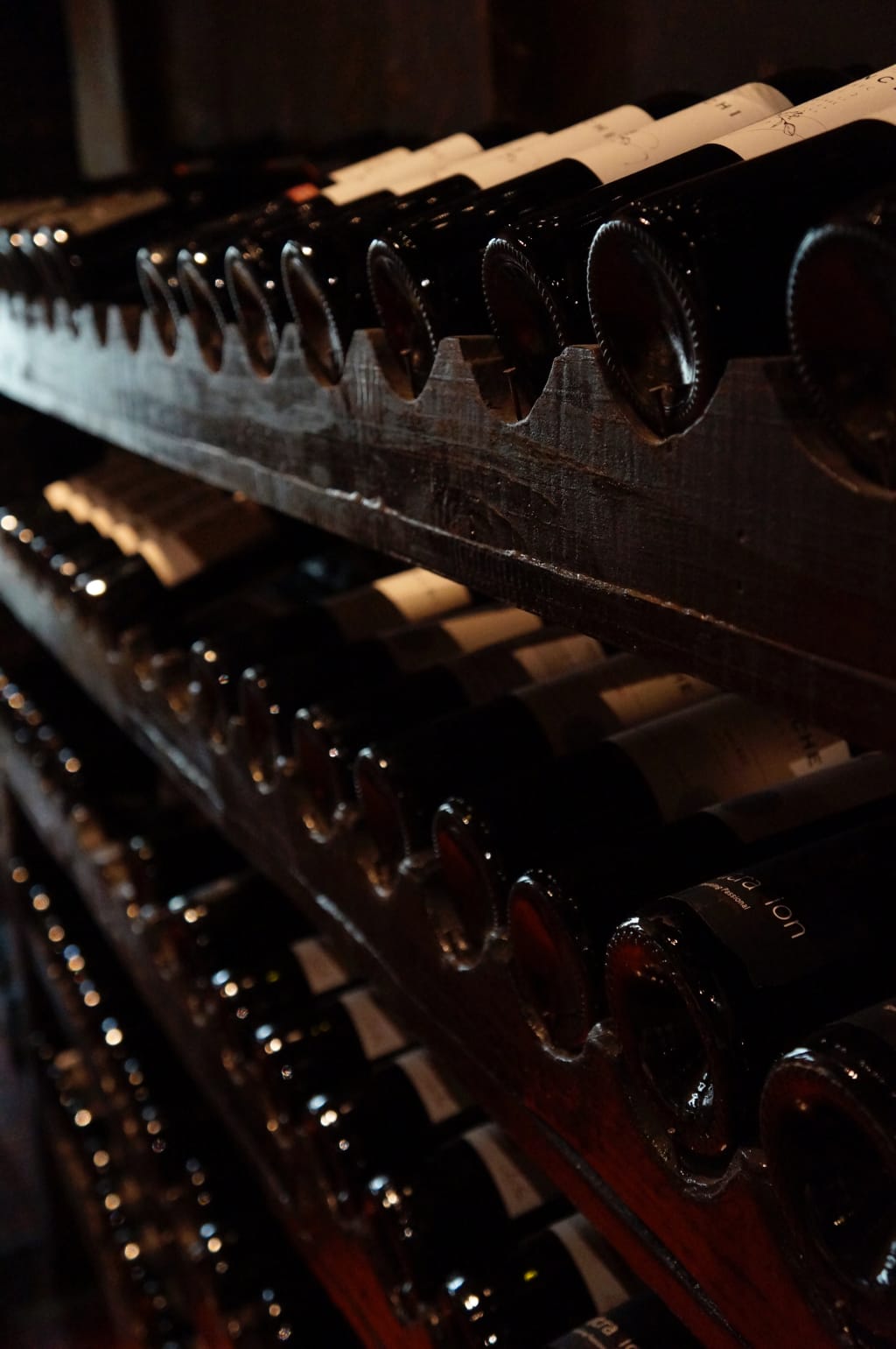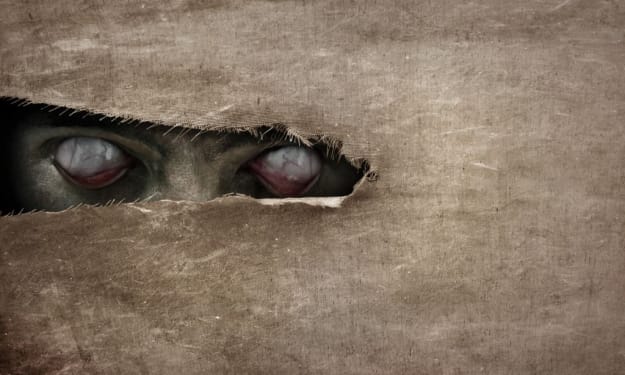Unraveling the Scandal of Rudy Kurniawan
The Wine Swindler

In March 2012, the FBI stormed the front door of wine expert Rudy Kurniawan, culminating in a shocking discovery that brought a four-year investigation to a close. Kurniawan, known for his designer suits and Lamborghini, was not the reputable figure he claimed to be. Instead, he had been orchestrating a grand scam, swindling millions of dollars from some of the wealthiest individuals in the world. This story unfolds with elements of deception, betrayal, and an unmistakable hint of fraud, as we delve into how one man and his family managed to defraud both bankers and wine aficionados. Let's explore the captivating tale that involves a mysterious newcomer and his audacious scheme, accompanied by a backdrop of suspenseful music, gasps, and the tingling of curiosity.
To truly grasp the sequence of events, we must rewind to the year 2001 when a new player emerged in the US wine auction scene. This enigmatic figure was none other than Rudy Kurniawan, an Indonesian who had come to the United States to study accounting at California State University, Northridge. Beyond his interest in wines, little was known about him at the time. However, he was about to become entangled in one of the most monumental scams the country had ever witnessed. To comprehend the ensuing madness, we must first understand Rudy's genuine passion: Burgundies.
Burgundies are wines exclusively grown in the Burgundy region of eastern France, and they come with a staggering price tag. Many vineyards in Burgundy have been owned by the same families for generations, nurturing the same grape varieties with a deep-rooted connection to the soil. There's something undeniably romantic about this notion, enticing collectors to invest fortunes in these precious bottles, sometimes without ever opening them. As an illustration, a single bottle of Romanee-Conti, one of the most coveted Burgundies globally, fetched an astounding $558,000 in 2018. It's clear that wine equates to money.
Soon after arriving in the US, the young student began to attract attention from wine enthusiasts due to the exorbitant sums he would splurge at prestigious wine auctions. In just 18 months of attending such events, he had already acquired around 3,000 bottles. By 2006, his spending had skyrocketed to an astronomical $1 million per month. Whenever a lot appeared that caught his eye, he fearlessly raised his paddle and would not lower it until he emerged victorious. Now, that's quite audacious. His infatuation with Romanee-Conti was so profound that he would purchase almost any vintage he could lay his hands on, earning him the moniker "Dr. Conti" among his peers.
Naturally, when a mysterious young man with seemingly unlimited wealth emerged out of thin air, questions began to arise within these exclusive circles. Who was this enigma, and where did his wealth originate? While Rudy kept his family business closely guarded, he would casually mention that it granted him a monthly allowance of $1 million. Not suspicious at all, right? Despite his enigmatic persona, people were drawn to him, a fact they would later come to regret. Rudy possessed charisma, down-to-earth charm, and the ability to win people over—a trait I can attest to being valuable in life. By the way, don't forget to click those like and subscribe buttons to stay updated with my captivating content. It's a win-win scenario—pun intended. Now, back to our story.
Rudy commenced hosting tasting nights for a select circle of fellow wine enthusiasts who doubled as his clients. This exclusive club was reserved for the wealthy, and money was never an obstacle for them. During these gatherings, they would easily consume wine worth anywhere from $100,000 to $200,000 each time they met—an astronomical amount by any standard. As part of their routine, each member took turns providing the wines for the evening. For Rudy, this presented an opportunity to showcase the extensive collection of ultra-expensive bottles he had accumulated with his mysterious cash stash.
As the mounting evidence against Rudy Kurniawan continued to emerge, the wine world was slowly unraveling the extent of his fraudulent activities. Bill Koch's lawsuit against him marked a turning point, exposing Rudy's deceitful practices and igniting a full-scale investigation. With Koch's vast resources and determination, he was prepared to go to great lengths to expose the fraudsters in the wine market.
The investigation revealed the intricate methods Rudy employed to fake wines and deceive collectors. Counterfeiting was one of the primary techniques he used. By meticulously replicating labels and shaping his own bottles to mimic authentic ones, he could create almost identical replicas. The replacement of corks and seals further added to the illusion of authenticity. However, the more valuable the bottle, the more intricate the details needed to be. Certain high-end bottles featured invisible ink on their labels, visible only under UV light. Rudy had to meticulously reproduce these features to avoid suspicion.
Another method involved artificially dating wines with impossibly early dates, making them appear as ultra-rare vintages. By creating the illusion that these wines existed before they were actually produced, Rudy exploited the desire of collectors to possess unique and exclusive bottles. For instance, his attempt to sell Clos St. Denis vintages dating back to 1945, even though the winemaker didn't start producing them until 1982, was a textbook example of this strategy.
In some instances, rather than creating fakes from scratch, Rudy resorted to dumpster diving. High-end restaurants that discarded empty wine bottles offered him an opportunity to obtain genuine bottles. He would fill these bottles with different contents, replace the cork and seal with replicas, and pass them off as rare wines. This method bypassed the need to create entirely fake bottles and relied on the authenticity of the original containers.
Throughout the investigation, experts examining Rudy's bottles discovered revealing details that exposed his deception. Traces of glue used to stick labels were analyzed, and inconsistencies with the historical timeline of certain materials became apparent. For example, finding Elmer's glue on bottles dated much earlier than its invention in 1947 raised red flags.
As the evidence mounted and more collectors came forward with their own stories of being duped by Rudy, the wine industry realized the extent of the scandal. Rudy Kurniawan had manipulated the market, driven up prices, and deceived some of the most prominent figures in the wine world.
The lawsuit filed by Bill Koch against Rudy in 2009 would set in motion a legal battle that would ultimately bring the swindler to justice. The story of Rudy Kurniawan's rise and fall had captivated the wine community, and now the world awaited the unfolding of his trial, eager to see justice served.
Rudy Kurniawan's wine fraud operation was indeed a sophisticated and elaborate scheme. His ability to create almost perfect replicas of expensive wines and his exceptional palate allowed him to deceive collectors and connoisseurs for a significant period. The fact that he mixed old commercial-grade French wine with young American wines to create his concoctions made it difficult to detect the fraud, especially for those who were not intimately familiar with the specific vintages.
Rudy's deception thrived due to a combination of factors. The code of silence within the wine-collecting community prevented many victims from accusing him, as it would have been seen as an insult to the host's hospitality. Additionally, the reselling of fraudulent bottles through various cellars made it challenging to trace back the origin of the chain reaction.
While Rudy's operation was vast, the question arises as to how he managed to accomplish it all alone. Creating one fake bottle alone took about an hour, and considering the large number of bottles involved, it seems implausible for a single person to execute the entire operation. Yet, Rudy was the only person arrested and charged, leaving unanswered questions about potential accomplices and their level of involvement.
Another issue raised is the role of auction houses in the authentication process. Despite the meticulous procedures claimed by these houses, Rudy managed to pass his fraudulent wines through their processes without raising suspicion. Some have questioned the accountability of auction houses and their potential interests in capitalizing on the booming wine market by giving glowing reviews to wines that didn't even exist.
It's important to note that Rudy Kurniawan was found guilty of wire fraud, mail fraud, and wine fraud. He was sentenced to 10 years in federal prison and was ordered to pay significant sums in damages to his victims. However, his lavish spending and massive credit card debts, coupled with the restitution payments, left him broke. Confiscation of his authentic wine collection helped raise some funds, but many victims did not recover their losses fully.
Rudy's motivations for engaging in wine fraud remain somewhat unclear. It's possible that his desire to attain a higher social status and a lifestyle he had never experienced in Indonesia drove him to increasingly desperate measures. However, the exact reasons behind his actions may never be fully known.
While Rudy Kurniawan served his prison sentence and was eventually deported to Indonesia after his release, the impact of his fraudulent activities on the wine industry lingers. The presence of thousands of his counterfeit bottles in people's cellars and the estimated $3 billion worth of the fake wine industry highlight the ongoing challenges in addressing this issue.
As for falling for Rudy's ploys, it's difficult to say. Wine fraud can be exceptionally convincing, even for knowledgeable individuals. The case of Rudy Kurniawan serves as a reminder to exercise caution, conduct thorough research, and rely on trusted sources when making high-value purchases.
About the Creator
Enjoyed the story? Support the Creator.
Subscribe for free to receive all their stories in your feed. You could also pledge your support or give them a one-off tip, letting them know you appreciate their work.





Comments
There are no comments for this story
Be the first to respond and start the conversation.